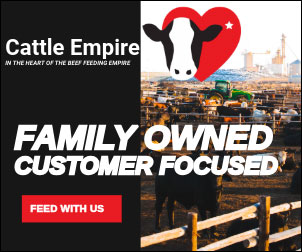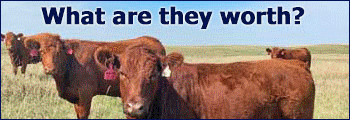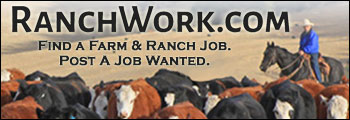Tyson Foods produces one out of every 5 pounds of beef, pork and chicken in the U.S.
Source: Wall Street Journal
Tyson Foods expects high beef prices to persist into next year as the nation’s cattle shortage continues to squeeze the meatpacking industry’s profits.
Arkansas-based Tyson, a bellwether for the American meat industry, said its beef prices rose 17% during its most recent quarter, while beef sales volumes fell 8%.
The lowest U.S. cattle supply since the 1950s is driving costs to record levels for meatpackers. Slaughterhouse operators have racked up hundreds of millions of dollars in losses as a result.
Tyson said its cattle costs for its 2025 fiscal year rose by almost $2 billion, compared with a year ago.
Losses in its beef business over the next year could outstrip those from the last 12 months, Tyson said. On an adjusted basis, the company reported a loss of $426 million from its beef business for the year.
“The beef segment remains our only soft spot,” said Tyson Chief Executive Donnie King on a call with analysts.
The results also come as President Trump takes aim at rising beef prices for consumers. On Friday, he said the Justice Department is launching an investigation into meatpacking companies and whether they are engaging in collusion to drive up prices. Retail ground beef prices were at a record high in September, up almost 12% from the prior year, according to government data.
Tyson Foods, JBS, Cargill and National Beef, which is owned by Brazil-based MBRF Global Foods, process about 85% of the country’s beef. Tyson didn’t comment on the investigation.
Industry officials have said that the rising prices are the result of a shortage in cattle. Ranchers thinned the size of their herds, following financial losses during the Covid-19 pandemic, years of severe drought conditions and rising costs.
Restrictions on Mexican cattle imports—due to a flesh-eating parasite spreading throughout the country’s livestock—and tariffs on Brazilian beef imports have helped keep U.S. prices elevated.
Executives from Tyson said some ranchers are starting to rebuild their herds in the upper Midwest and northern U.S., though not in western and southern states. Earlier this year, Tyson said it expected the U.S. cattle herd to expand by 2028.
Instead of rushing to build up their herds, King said ranchers were trying to maximize their earnings. “They’re making those business decisions based on what’s best for them, and we’re just trying to react,” King said.
Tyson, which produces one out of every 5 pounds of beef, pork and chicken in the U.S., and other large meatpacking companies are looking to cut costs and boost the efficiency of their operations. They are also relying on their chicken businesses to offset their heavy losses in beef.
Chicken processors, including Tyson, have benefited from cheaper livestock feed—the top expense when raising poultry—due to falling grain prices. Higher beef and pork prices have turned more consumers toward chicken nuggets and wings, helping lift Tyson’s chicken sales volumes 4% in the fourth quarter.
Overall, Tyson’s profit fell 87% in the latest quarter to $47 million.
Stripping out one-time items, earnings were $1.15 a share, higher than what Wall Street analysts were expecting. Quarterly sales climbed 2% to $13.86 billion.
Shares in Tyson ticked up about 3% on Monday, as it also posted a stronger-than-expected outlook for operating income in fiscal 2026. The stock is down roughly 10% over the past 12 months.
Articles on The Cattle Range are published because of interesting content but don't necessarily reflect the views of The Cattle Range.










